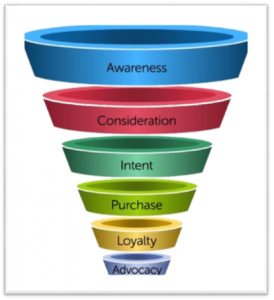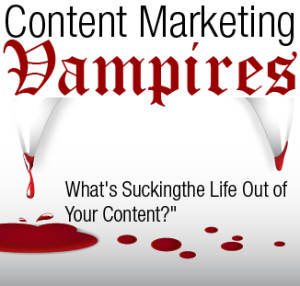Hey, you know what? Social media has changed a lot more than you might think. Okay, it’s not that different to what it was a couple of years ago, but it’s definitely fair to say that things were a little less complex two years ago.
There were even some old-fashioned social media marketing practises that were carried out regularly just a couple of years ago that would be absolute suicide now if you’re after any kind of engagement. And some other stuff that would just slow you down massively. It’s 2016, and it’s time to think about following the most efficient path.
But what does that path look like? You’d be surprised. If you take a look at some of the more old-fashioned ways of doing things, you’re probably in pretty good shape. Take the first one on our list. Believe it or not, some brands are still following this ‘strategy’ in their social media marketing. It costs them money, and this is a biggie to them, obviously.

1. Be everywhere, all the time
That’s right. It used to be conventional wisdom that the more visible you were on social media, the more effective your strategy. This is not such an old practise either. We guess brands still felt this was gospel back in 2015. But as soon as social media became populated with a wide variety of platforms (as in anything other than Twitter, Facebook and LinkedIn) brands started to think you had to be everywhere. This is not true, and it’s even more of a lie in this current landscape. This is all about running a business after all, and just like you wouldn’t spend time trying to sell to a client who isn’t interested, ever, you shouldn’t focus on a channel that is not bringing you ROI. Find that ROI in your data. If it shows you that you are getting next to no engagement on Instagram, for example, ditch it for now. Come back to it when you’re stronger.

2. Never tweet the same stuff twice.
This is an old-fashioned approach. Most definitely. The idea is that you can saturate the arena if you keep tweeting the same stuff. Let’s not forget that Twitter doesn’t let you literally write the same tweet twice (they’re not stupid). The fact that audiences are becoming more complex than ever means that you can safely send out the same basic tweet (rewritten of course) at different times of the day and not worry about it. No one is going to tell you off. And the engagement will naturally increase as you start to hit more of your audience with the stuff that works. See how Locowise helps you figure out your optimal posting frequency.

3. Don’t curate content. It sucks.
This is something that has now officially died a death as a piece of advice. It used to be general wisdom that curating content excessively meant that you were annoying your audience. They wanted to see the good stuff, the real stuff that you produced yourself. To a certain extent, this is true. But the thinking back then (we’re talking 2013-14 essentially) is that curated content is just ‘filler’ and meant nothing. This is not the case anymore, and some of the best and most respected brands out there use curated content regularly. It’s all about how you do it. If you curate content and just send it out there without reading it and understanding it and then putting your own spin on it, you’re wasting your time. Find great stuff and share it. And preferably put your own voice into it. Great stuff, shared regularly, makes a real difference to your usefulness as a brand.
4. Never outsource social.
We know this seems a little weird as a concept. But it used to be seen as one of the most important pieces of advice ever given to any social media marketing manager or company owner. Outsourcing doesn’t just mean finding some hapless freelancer and giving them your Twitter account details, though. It also means using platforms, like one we know pretty well. It means taking the mundane tasks such as following people or updating your bio and giving it to someone or something that can do it quickly and easily. This gives you time to think about content themes and generally being an awesome brand.
5. Treating all of your media as little, individual babies.
This is still done today by a few brands, but luckily the majority seem to be waking up. This is so 2012 it hurts. Resist the urge to tackle each social media platform you work on as an individual entity that requires its very own approach. To an extent it does, of course. But the big mistake is to think that they don’t need to talk to each other. Use your channels together and share branding notes, and even messages. Whatever you do, don’t assign individual managers to each account. Social media channels work together. They share ideas. They group hug.

6. Doing it blind.
Perhaps small to medium-sized businesses are most guilty of still following this ancient practice. This is where they don’t use metrics or data at all, and just instead send out social signals as much as they can and as haphazardly as possible. It works for about ten minutes, and then you realise you actually have no idea at all on what you are doing. Taking this approach means you don’t bother looking at any numbers, don’t know what is working and what isn’t, you just instead see if it sticks. Social media doesn’t just stick anymore. There are no overnight success stories, and no one does this blind. These are 5 ways how Locowise can help you not doing your social media blind.

7. Ignoring the trends.
Social media is not as stuck as it was way back in the 2012-2013 era when there were a couple of big channels only (Twitter and Facebook, let’s be honest) and everything else was basically just playing around. The whole game has changed massively, and the speed of change is much more pronounced. With technology (and audience needs) changing overnight in some cases, it is important that your brand stays flexible. Don’t invest millions in one platform. Have a focus on watching trends and seeing what is coming. If you don’t think ahead, when the next big thing erupts, you’ll be unable to do anything about it.

8. Chasing those likes in the worst way.
Like bait is a very simple concept to expand on. Basically, you write headlines that are almost guaranteed (in your eyes at least) to get clicked. However, the reality is that they may well be clicked but they don’t lead to engagement. As soon as people see that you are simply creating headlines that are meant to get people’s attention, and the substance of your content is shallow beyond belief, then you will be dumped like (July 06, 2016)’s news. This is still a problem, and it is old news (see what we did there?). Seriously, forget focusing on baiting people with salacious titles and headlines, and focus on the meat that makes people engage.
These eight cardinal sins are what’s making some brands into lame ducks today. And the problem is that these practices are so old-fashioned. They are just ill-informed, and generally from when social media wasn’t as diverse as it is now. Avoid this and do the opposite of the eight things above.
Feel like becoming a true social media ninja? Sick of working blind? Try LocoWise free for 14 days. It will transform your social.
Digital & Social Articles on Business 2 Community(8)






